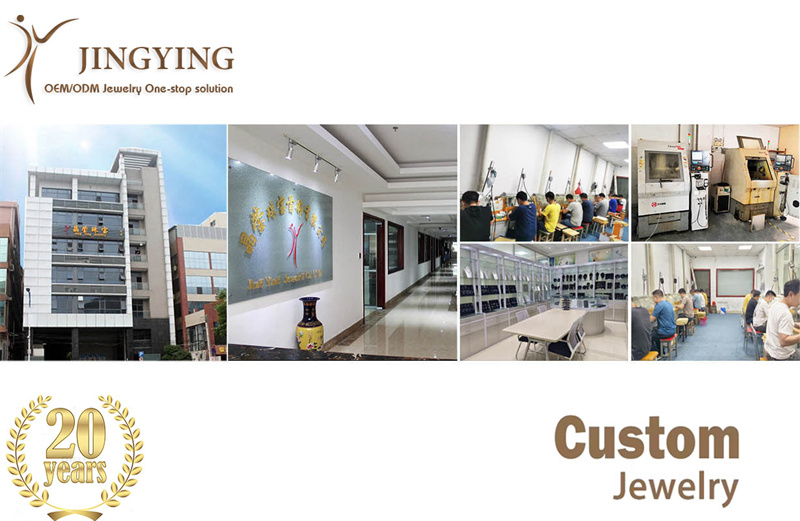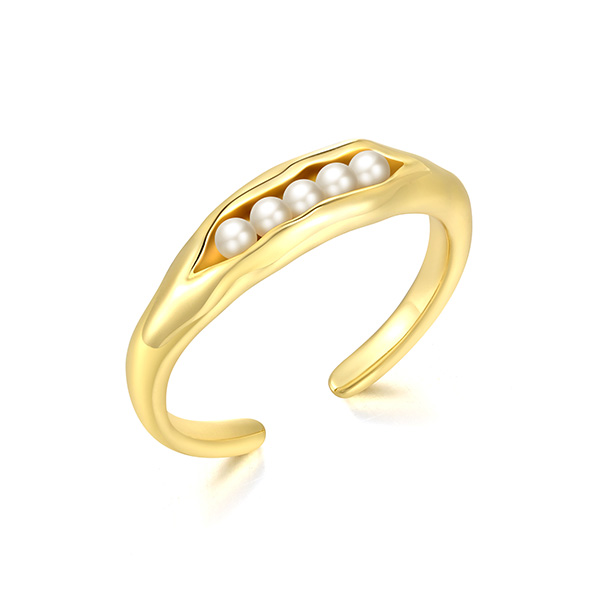Brass vs. Sterling Silver for Jewelry: The Ultimate Guide for Designers and Consumers
Introduction: The Eternal Debate in Jewelry Making
The choice between brass and sterling silver represents one of the most fundamental decisions in jewelry creation and purchasing. This 5000-word comprehensive analysis examines every aspect of these two popular metals, providing jewelry designers, manufacturers, retailers, and consumers with the knowledge needed to make informed decisions. From material properties and manufacturing considerations to market positioning and long-term value, we explore which metal truly deserves a place in your jewelry collection or product line.
The global jewelry market continues to see both metals maintaining significant market share, with sterling silver accounting for approximately $22.3 billion annually and brass comprising nearly 35% of the fashion jewelry segment. Understanding their differences goes beyond simple cost comparison—it requires examining their complete lifecycle from production to wearer experience.
1. Material Science: Understanding the Fundamentals
1.1 Sterling Silver Composition and Properties
Sterling silver represents the premium choice in silver jewelry, with specific composition standards:
Material Specifications:
- Composition: 92.5% silver, 7.5% copper (international standard)
- Density: 10.36 g/cm³
- Melting Point: 893°C (1640°F)
- Vickers Hardness: 75-85 HV (annealed)
- Tensile Strength: 205-275 MPa
- Color: Bright white metallic luster
Key Characteristics:
- Precious metal status with intrinsic value
- Naturally hypoallergenic properties
- Excellent malleability and ductility
- High thermal and electrical conductivity
1.2 Brass Composition and Variants
Brass encompasses a family of copper-zinc alloys with varying properties:
Common Jewelry Alloys:
- C260 (Cartridge Brass): 70% Cu, 30% Zn – Most common
- C220 (Commercial Bronze): 90% Cu, 10% Zn – Warmer color
- C280 (Muntz Metal): 60% Cu, 40% Zn – Higher strength
Physical Properties:
- Density: 8.4-8.7 g/cm³
- Melting Point: 900-940°C (1652-1724°F)
- Vickers Hardness: 60-150 HV (depending on composition)
- Tensile Strength: 350-500 MPa
- Color: Golden-yellow to reddish-gold
2. Manufacturing and Production Considerations
2.1 Workability and Fabrication
Sterling Silver Advantages:
- Superior ductility for intricate wire work
- Excellent for hand fabrication and forging
- Consistent performance in casting operations
- Easy to solder with various silver solders
Brass Manufacturing Benefits:
- Higher strength reduces deformation risk
- Better machinability (80% vs. 30% free-cutting rating)
- Lower material cost allows for experimentation
- Excellent for mass production stamping
2.2 Casting Performance Comparison
| Parameter | Sterling Silver | Brass (C260) |
|---|---|---|
| Fluidity | Excellent | Very Good |
| Shrinkage | 1.8% | 1.5% |
| Surface Quality | Superior | Good |
| Yield Rate | 90-94% | 92-96% |
| Detail Reproduction | Excellent | Very Good |
2.3 Production Cost Analysis
Material Costs (2024):
- Sterling Silver: $0.85-0.95 per gram
- Brass: $0.0068-0.0078 per gram
- Cost Difference: Approximately 120:1 ratio
Manufacturing Costs:
- Silver requires more careful handling
- Brass allows faster production speeds
- Silver polishing requires more skill
- Brass tooling lasts longer
3. Durability and Long-Term Performance
3.1 Mechanical Durability
Hardness and Scratch Resistance:
- Sterling Silver: 75-85 HV (softer, shows wear more easily)
- Brass: 60-150 HV (harder, more scratch-resistant)
- Verdict: Brass generally offers better resistance to everyday abrasion
Impact and Fatigue Resistance:
- Brass has higher tensile strength (350-500 MPa vs. 205-275 MPa)
- Silver is more prone to deformation under stress
- Brass maintains shape better in rings and bracelets
- Silver requires thicker gauges for equivalent strength
3.2 Tarnish and Corrosion Resistance
Sterling Silver Tarnishing:
- Forms black silver sulfide (Ag₂S) when exposed to sulfur
- Accelerated by humidity, cosmetics, and environmental factors
- Requires regular polishing and proper storage
- Can be minimized with anti-tarnish treatments
Brass Corrosion Behavior:
- Develops patina ranging from brown to green
- Zinc content can lead to dezincification in harsh environments
- Generally more resistant to everyday tarnishing than silver
- Lacquer coatings can prevent tarnishing
Maintenance Requirements:
- Silver: Frequent polishing with specialized cloths
- Brass: Occasional cleaning with mild soap
- Both benefit from proper storage in anti-tarnish conditions
4. Aesthetic Considerations
4.1 Color and Appearance
Sterling Silver:
- Bright, white metallic appearance
- Traditional luxury aesthetic
- Complements all skin tones
- Consistent color across pieces
Brass:
- Warm, golden hue
- Vintage or antique appearance
- Can be plated for different finishes
- Color variations between batches possible
4.2 Surface Finish Options
Silver Finishing Techniques:
- High polish: Brilliant mirror finish
- Satin/matte: Soft, non-reflective surface
- Oxidized: Darkened details for contrast
- Hammered: Textured artisan appearance
Brass Finishing Possibilities:
- Polished: Bright gold-like appearance
- Brushed: Contemporary matte finish
- Antiqued: Darkened recesses for depth
- Plated: Gold, silver, or black finishes
4.3 Design Versatility
- Silver: Better for fine, delicate designs
- Brass: Superior for structural, geometric pieces
- Both accept gemstones well with proper settings
- Silver preferred for traditional and fine jewelry
- Brass ideal for fashion and statement pieces
5. Consumer Health and Safety
5.1 Hypoallergenic Properties
Sterling Silver:
- Naturally hypoallergenic
- Rarely causes skin reactions
- Safe for sensitive skin and piercings
- Medical grade sometimes used for fresh piercings
Brass Considerations:
- Copper and zinc generally well-tolerated
- Some individuals may react to zinc content
- Nickel contamination in some alloys possible
- Requires plating for guaranteed hypoallergenic properties
Allergy Statistics:
- 10-15% of population has nickel sensitivity
- 2-3% may react to brass components
- Silver reactions extremely rare (<0.5%)
- Always recommend testing for known metal sensitivities
5.2 Weight and Comfort
Density Comparison:
- Sterling Silver: 10.36 g/cm³
- Brass: 8.4-8.7 g/cm³
- Practical Impact: Brass pieces feel approximately 15-20% lighter
Wearability Factors:
- Lighter brass preferred for large statement pieces
- Silver’s weight conveys quality and substance
- Both comfortable for everyday wear
- Individual preference determines optimal weight
6. Market Positioning and Consumer Perception
6.1 Price Point Analysis
| Market Segment | Sterling Silver | Brass |
|---|---|---|
| Fast Fashion | $25-50 | $10-25 |
| Mid-Market | $50-150 | $25-60 |
| Designer | $150-500 | $60-150 |
| Luxury | $500+ | $150-300 |
6.2 Target Demographics
Sterling Silver Consumers:
- Age: 25-55
- Income: Middle to upper-middle class
- Values: Quality, longevity, intrinsic value
- Preferences: Traditional, timeless pieces
Brass Consumers:
- Age: 18-40
- Income: All ranges, value-conscious
- Values: Fashion, trends, affordability
- Preferences: Bold, contemporary styles
6.3 Perceived Value and Gifting
- Silver perceived as “real jewelry”
- Brass often viewed as “fashion jewelry”
- Silver maintains resale value
- Brass seen as disposable or trend-based
- Silver preferred for meaningful gifts and heirlooms
7. Environmental and Ethical Considerations
7.1 Sustainability Factors
Mining Impact:
- Silver mining: Energy intensive, environmental concerns
- Brass production: Uses recycled content (typically 75-85%)
- Both industries improving environmental practices
Recyclability:
- Both metals are 100% recyclable
- Silver recycling rate: Approximately 65%
- Brass recycling rate: 75-80%
- Established recycling infrastructure for both
7.2 Ethical Sourcing
Silver Certification:
- Fairmined Silver certification available
- RJC (Responsible Jewellery Council) certification
- Traceability from mine to market
- Premium for ethically sourced materials
Brass Sourcing:
- Less regulated supply chain
- Recycled content reduces mining impact
- Fewer certification options available
- Generally lower environmental concerns
8. Maintenance and Care Requirements
8.1 Cleaning Protocols
Sterling Silver Maintenance:
- Regular polishing with silver-specific cloths
- Professional cleaning recommended annually
- Avoid exposure to chemicals, chlorine, sulfur
- Store in anti-tarnish bags or cloths
Brass Care Instructions:
- Simple cleaning with mild soap and water
- Occasional polishing with brass cleaner
- Lacquered pieces require less maintenance
- Store in dry conditions to prevent tarnishing
8.2 Repair and Restoration
Silver Repair Advantages:
- Easily soldered and repaired by most jewelers
- Can be re-polished multiple times
- Damaged pieces can be melted and reused
- Wide availability of repair services
Brass Repair Considerations:
- More challenging to repair invisibly
- Plating may need reapplication after repair
- Fewer jewelers work with brass
- Lower cost often makes replacement preferable
9. Specialized Applications
9.1 When to Choose Sterling Silver
Ideal Applications:
- Engagement and wedding jewelry
- Heirloom and legacy pieces
- Fine jewelry with precious gemstones
- Medical and piercing jewelry
- Investment-quality pieces
Technical Advantages:
- Better for intricate filigree work
- Superior for stone setting in fine jewelry
- Ideal for pieces requiring frequent sizing
- Preferred for jewelry with moving parts
9.2 When Brass is Preferable
Optimal Uses:
- Fashion and trend-driven jewelry
- Large statement pieces
- Cost-sensitive product lines
- Experimental or artistic designs
- Seasonal collections
Practical Benefits:
- Lower risk for initial design ventures
- Better for high-volume production
- Ideal for mixed-media pieces
- Superior for architectural designs
10. Economic Considerations for Businesses
10.1 Inventory and Cash Flow
Sterling Silver Impact:
- Higher capital tied up in inventory
- Price volatility affects costing
- Insurance and security requirements
- Slower inventory turnover possible
Brass Advantages:
- Lower inventory investment
- Stable material pricing
- Reduced insurance costs
- Faster inventory turnover
10.2 Profit Margin Analysis
Markup Structures:
- Silver: Typically 3-5x material cost
- Brass: Typically 5-8x material cost
- Both allow healthy margins with proper positioning
- Silver offers higher absolute profit per piece
Market Positioning:
- Silver commands premium pricing
- Brass allows competitive pricing
- Both can be profitable with correct strategy
- Market segment determines optimal markup
11. Future Trends and Market Evolution
11.1 Consumer Preference Shifts
Growing Trends:
- Increased demand for sustainable materials
- Preference for lighter weight jewelry
- Rise of gender-neutral designs
- Growing appreciation for artisanal pieces
Material Impact:
- Both metals well-positioned for sustainability
- Brass benefits from lighter weight preference
- Silver maintains artisanal credibility
- Both adaptable to gender-neutral designs
11.2 Technological Advancements
Manufacturing Innovations:
- Improved brass alloys with enhanced properties
- Advanced silver tarnish-resistant coatings
- 3D printing compatibility for both metals
- New finishing techniques expanding design options
Market Developments:
- Growth in direct-to-consumer brands
- Increased transparency in material sourcing
- Rising importance of brand storytelling
- Both metals benefiting from e-commerce growth
12. Conclusion: Making the Right Choice
12.1 Summary of Key Findings
Choose Sterling Silver When:
- Quality and longevity are priorities
- Creating heirloom or investment pieces
- Targeting traditional jewelry consumers
- Working with precious gemstones
- Hypoallergenic properties are essential
Choose Brass When:
- Cost-effectiveness is crucial
- Targeting fashion-forward consumers
- Producing large or structural designs
- Experimenting with new designs
- Rapid production turnaround needed
12.2 Strategic Recommendations
For Designers and Manufacturers:
- Consider your target market carefully
- Evaluate your technical capabilities
- Calculate total cost, not just material cost
- Test both metals for specific applications
For Consumers:
- Consider your budget and style preferences
- Evaluate how you’ll wear and maintain the jewelry
- Consider any metal sensitivities
- Think about long-term value and usage
Final Verdict:
There is no universal “better” option—the optimal choice depends on specific needs, preferences, and circumstances. Sterling silver offers timeless quality and intrinsic value, while brass provides affordability and design flexibility. Many successful jewelry businesses and collections strategically use both metals, positioning them for different market segments and price points.
The most informed approach recognizes that both metals have earned their place in the jewelry world, each offering unique advantages that make them ideal for particular applications. By understanding these differences and making conscious choices, both creators and wearers can select the metal that truly aligns with their needs, values, and aesthetic preferences.

